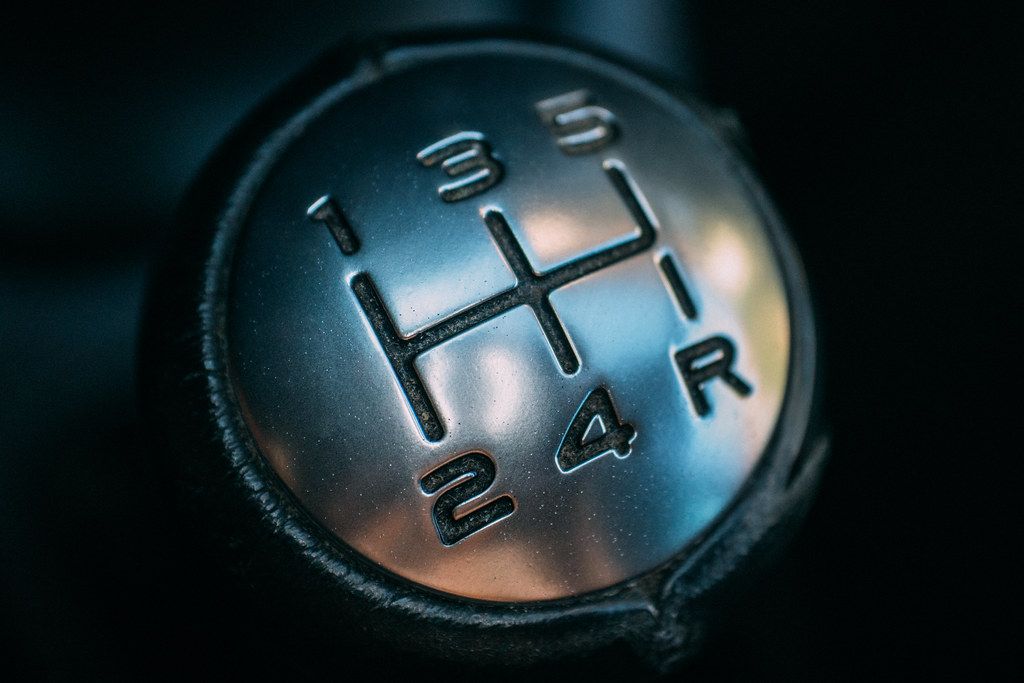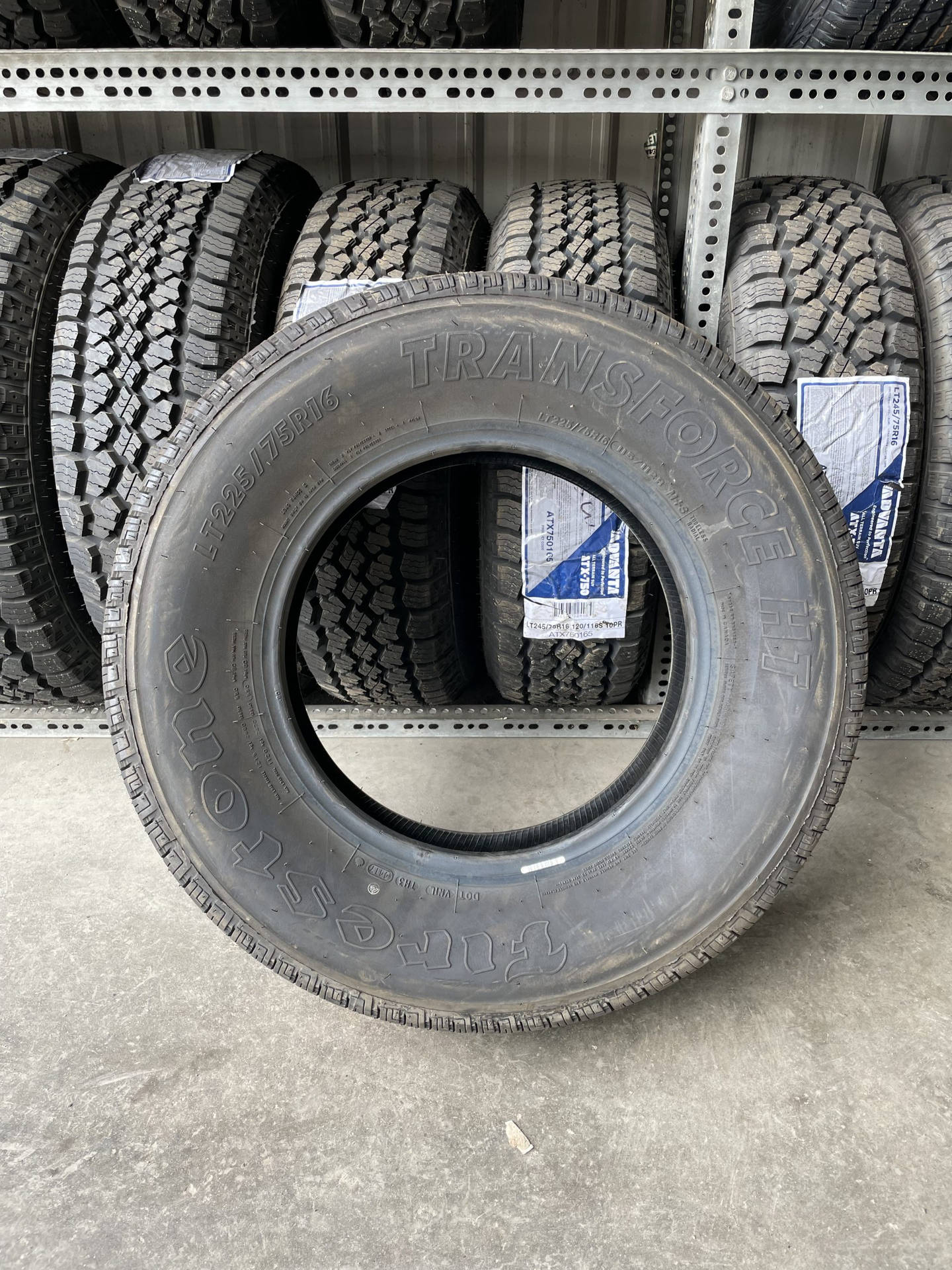
Car shopping used to be a straightforward process, with certain features expected to come standard, enhancing safety or convenience. However, a significant and often unannounced shift is occurring within the automotive industry. Automakers are increasingly removing features many drivers have grown accustomed to, often without explicitly disclosing these changes upfront.
This evolving trend is more than just about losing minor conveniences; it carries tangible implications for your safety, comfort, and even your financial planning. For consumers, navigating the market for a new vehicle now requires heightened vigilance and understanding of what might be missing from the latest models. It’s crucial to be informed and prepared to ask the right questions before making a significant purchase.
As a dedicated resource for consumers, this comprehensive guide will illuminate some key car features quietly disappearing from new vehicles. We will delve into the reasons behind these removals, their potential impact on your driving experience, and practical steps you can take to ensure your next car meets your expectations. Staying ahead of these changes is the best defense against buyer’s remorse and the key to securing a vehicle that truly serves your needs.

1. **Physical Buttons and Knobs**The tactile satisfaction and intuitive operation of physical buttons and knobs for controls like climate, radio, and seat adjustments have long been a hallmark of comfortable driving. However, modern automotive design increasingly gravitates towards sleek, minimalist interiors dominated by touchscreens. This shift means drivers are often compelled to interact with digital interfaces or voice commands for functions once instantaneously accessible.
While automakers often cite aesthetic appeal and greater customization as reasons, the practical implications for drivers are significant. Operating a touchscreen inherently demands more visual attention, diverting a driver’s eyes from the road for longer periods. Studies have indicated that using touchscreens can cause a driver’s eyes to be off the road longer than using a physical control, potentially compromising safety.
For many, the loss of haptic feedback makes essential adjustments less precise and more distracting. Imagine attempting to quickly lower radio volume or adjust cabin temperature in traffic—a simple, reflexive action with a physical dial becomes a multi-step process on a screen. This can lead to frustration and, more importantly, a reduced ability to maintain full focus on the road.
Fortunately, some manufacturers are acknowledging consumer feedback. Brands like Volkswagen, Subaru, and Hyundai, for instance, are reportedly reintroducing or maintaining some physical controls. For those who prioritize immediate, unadorned access to vital car functions and appreciate the safety benefits of tactile feedback, a thorough inspection of the dashboard is essential before committing.
When evaluating a new car, scrutinize the interface for commonly used functions. Do not assume physical controls will be present, even if they were in previous models. Ask specific questions about control mechanisms for climate, audio, and navigation to ensure your preferred level of usability and safety is not compromised by over-reliance on digital displays.
Read more about: Beyond the Sticker Price: A Comprehensive Consumer Reports Guide to the 2015 Ford F-150’s True Cost and Value

2. **Spare Tires**For decades, a spare tire’s presence was an unwritten standard, providing a critical safety net against unexpected punctures and blowouts. It offered drivers peace of mind, knowing a flat tire, while inconvenient, would not necessarily mean being stranded. Yet, this fundamental feature is now conspicuously absent from many new cars.
Automakers increasingly replace traditional spare tires with alternatives like tire repair kits or run-flat tires. The rationale centers on efficiency: removing the spare reduces vehicle weight, potentially improving fuel economy. It also frees up valuable cargo space, allowing for more flexible interior designs.
While these alternatives seem practical, their real-world effectiveness can be limited, potentially leaving drivers vulnerable. A tire repair kit, with sealant and inflator, is only effective for minor punctures, not larger tears or sidewall damage. Run-flat tires, allowing short-distance driving after a puncture, still require prompt repair and can be more expensive.
True vulnerability emerges when a tire incident occurs remotely, far from roadside assistance. If a repair kit fails, or if the flat renders run-flats ineffective, drivers could be stranded for extended periods. This scenario poses significant inconvenience and potential safety risks, especially during inclement weather or late-night travel.
As a discerning car buyer, it is paramount to inquire specifically about the tire setup. Do not assume a spare tire is included. If your driving involves long distances, rural travel, or simply a preference for traditional readiness, consider models offering a full-size or compact spare. If your desired vehicle lacks one, purchasing a suitable spare and jack separately is a worthwhile investment, ensuring preparedness for any eventuality.
Read more about: From Keys to Cassettes: 14 Once-Loved Car Features That Are Now Relics of the Past
3. **AM Radio**AM radio has been an integral part of the in-car experience for generations, serving as a reliable source for local news, talk shows, and, crucially, emergency broadcasts. Its reach, particularly in rural and remote areas where other signals might falter, has made it a foundational element of public information. Yet, this long-standing feature is quietly phased out of an increasing number of new vehicles, especially within the electric vehicle (EV) segment.
Manufacturers cite two primary reasons for AM radio’s removal. First, EV electric motors and high-voltage systems can generate electromagnetic interference, leading to static and poor reception on AM frequencies. Second, some automakers suggest declining listener numbers and the rise of digital alternatives like streaming indicate reduced consumer demand.
However, losing AM radio extends beyond casual listening. In times of local emergencies, natural disasters, or unexpected events, AM broadcasters often serve as critical lifelines, providing vital real-time updates when other communication channels are overloaded or unavailable. This is particularly true in regions with unreliable cellular service or during widespread power outages.
Various advocacy groups and public safety organizations actively push back against this trend, emphasizing AM radio’s indispensable role in public safety and national emergency communication systems. For drivers relying on this medium for local alerts, news, or its unique programming, its absence can represent a significant loss of convenience and a critical information source.
Before finalizing a purchase, especially of an EV or a model with a heavily integrated digital infotainment system, verify if AM radio is still part of the audio package. Ask direct questions about its inclusion and functionality. For many, maintaining access to diverse information channels, particularly those essential for community resilience and emergency preparedness, remains a non-negotiable aspect of their vehicle’s feature set.
Read more about: Unpacking Faith Hill’s Incredible Journey: The Life, Loves, and Transformations of a Country Icon That Still Turn Heads

4. **Manual Transmissions**The manual transmission, often called the “stick shift,” has long represented a direct connection between driver and machine, offering an engaging and responsive driving experience. It provides a level of control many enthusiasts cherish, allowing precise gear selection and a more immersive feel behind the wheel. However, the manual gearbox is rapidly becoming a relic in the modern automotive landscape.
Its dwindling availability is largely driven by evolving consumer preferences and manufacturing economics. Most drivers today opt for automatic gearboxes, perceived as more convenient, especially in urban traffic. Automakers also find manuals more expensive to produce due to lower demand and complexities integrating them into sophisticated powertrains.
For a significant segment of car enthusiasts, the disappearance of manual options represents a tangible downgrade in driving pleasure and engagement. The unique satisfaction of executing a perfect downshift or navigating winding roads with full control over gear ratios is something paddle shifters simply cannot replicate. The shift to automatics, while often improving efficiency, can strip away driver involvement.
As a result, car buyers specifically desiring a manual transmission will find their choices shrinking dramatically. Models that once offered a stick shift have often discontinued it, narrowing the market to select performance-oriented or niche vehicles. This trend means finding a new car with a manual requires dedicated research and, potentially, compromise on other desired features.
If the thrill and control of a manual transmission are paramount, conduct thorough research into specific model years and trims. Never assume an option historically offered by a model is still available. Explicitly confirm the transmission type with the dealership, ensuring you are not presented with a “look-alike” automatic system that fails to deliver the authentic manual driving experience you desire.
Read more about: Unleashing the Beasts: A Deep Dive into the 7 Greatest Euro Hot Hatches of the 2000s that Still Thrill Enthusiasts

5. **CD Players**Not long ago, a CD player was an indispensable feature in nearly every new car, serving as the primary means of in-car entertainment. Drivers curated extensive CD collections, enjoying albums and compilations with consistent audio quality. However, much like the home stereo, the car CD player has fallen victim to digital technology and is now nearing extinction in new models.
The primary catalysts for its disappearance are widespread streaming services, Bluetooth connectivity, and smartphone integration. These digital solutions offer unparalleled convenience, providing access to vast libraries of music, podcasts, and audiobooks without physical media. Automakers view CD player removal as a way to save space, reduce manufacturing costs, and allocate more dashboard real estate to larger infotainment screens and advanced digital technologies.
While most consumers transitioned to digital media, a segment of drivers retains extensive CD collections or prefers physical media. For these individuals, the absence of a built-in CD player in a new vehicle can be a significant disappointment, as there is no easy or elegant way to add this functionality later. Aftermarket solutions often sacrifice aesthetic integration or involve cumbersome external devices.
This shift highlights a broader industry trend: prioritizing streamlined, technology-forward designs over traditional comforts. The focus is increasingly on cloud-based entertainment and digital ecosystems, positioning physical media as a legacy format. While this aligns with many modern consumption habits, it underscores the need for buyers to reassess their personal media preferences before committing to a new car.
Therefore, if your driving enjoyment still revolves around a cherished CD collection, you might find yourself in a dilemma. Prospective buyers dedicated to physical media may need to consider holding onto older vehicles or exploring limited options for older models retaining CD player functionality. Alternatively, for those ready to embrace the digital age, ensure your new car offers robust Bluetooth, USB, and integrated streaming capabilities as viable substitutes for your musical needs.
Read more about: Unpacking 2024’s EV Landscape: The 10 Most Reliable Electric Vehicles and the Dynamics Driving Record Sales

6. **Engine Temperature Gauges**For decades, the engine temperature gauge was a silent guardian on our dashboards, providing crucial, real-time feedback on one of the most vital aspects of a vehicle’s operation: its engine health. This indicator offered drivers a clear, continuous visual of their engine’s operating temperature, allowing them to detect subtle fluctuations or a gradual rise that could signal an impending problem. It was a proactive tool, empowering drivers to take preventative action before a minor issue escalated into a major, costly repair. However, this essential monitoring feature is now quietly fading from many new cars, replaced, if at all, by a simple warning light that illuminates only when an overheating crisis is already underway.
The shift away from dedicated temperature gauges is often attributed to automakers’ desire for minimalist dashboard designs and cost efficiencies. By integrating monitoring functions into complex infotainment systems or replacing them with rudimentary warning lights, manufacturers streamline production processes and reduce physical components. The argument presented is that modern engines are more reliable, rendering constant temperature monitoring unnecessary for the average driver. This perspective, however, overlooks the fundamental principle of informed vehicle operation and proactive maintenance that the gauge once supported.
For consumers, the absence of a traditional engine temperature gauge represents a significant loss of critical information. A warning light is reactive; it informs the driver that a severe problem has already occurred—the engine is overheating—rather than allowing them to observe a slow, steady climb. Missing these early warning signs can lead directly to catastrophic engine damage, roadside breakdowns, and substantially higher repair bills. The ability to pull over safely or seek immediate service based on a gradual temperature increase is a valuable aspect of vehicle care now being systematically removed.
This trend forces a greater reliance on the vehicle’s onboard computer systems and on the driver’s responsiveness to a sudden, often urgent, warning. While modern vehicles have advanced diagnostics, these are often not transparently communicated to the driver until a fault reaches a critical threshold. For those who prefer to be intimately aware of their vehicle’s operational status and to address potential issues before they become emergencies, the removal of the temperature gauge is a genuine concern. It transforms a proactive driver into a reactive one, leaving them vulnerable to the immediate consequences of an unexpected mechanical failure.
Therefore, when considering a new vehicle, it is paramount to meticulously inspect the dashboard and ascertain how engine temperature is communicated. Do not assume a traditional gauge will be present. Ask specific questions of the dealership regarding the vehicle’s engine monitoring capabilities. For drivers who value the ability to keep a vigilant eye on their engine’s health, prioritizing a model that still offers a comprehensive temperature gauge is a practical step towards safeguarding their investment and ensuring peace of mind on the road.
Read more about: Unleashing the Beasts of ’62: A Deep Dive into 8 Legendary American Muscle Car Grandfathers

7. **Rear Window Wipers on SUVs**For many years, the rear window wiper was an almost universal and unquestioned feature on SUVs, hatchbacks, and wagons—any vehicle design where the rear window typically accumulated dirt, rain, or snow quickly due to aerodynamic forces. This seemingly simple component played a critical role in maintaining clear rear visibility, a fundamental aspect of safe driving, especially in adverse weather conditions. Whether it was rain, snow, or road grime, the ability to quickly clear the rear glass with the flick of a switch was a vital convenience and, more importantly, a significant safety enhancer. However, this practical feature is increasingly being omitted from new models, particularly in the growing segment of electric vehicles and sleek crossover designs.
Automakers offer various justifications for this removal. Some claim that advanced aerodynamic designs, particularly on sloped rear windows, effectively shed water and debris, rendering a wiper less necessary. Others point to new hydrophobic glass coatings or streamlined aesthetics as reasons for its elimination, arguing that its absence contributes to a cleaner, more modern vehicle profile. From a manufacturing perspective, removing a rear wiper system represents a small but cumulative cost saving and a reduction in production complexity. These considerations, however, often prioritize design and cost-cutting over established, real-world utility for the driver.
The practical impact on consumers, particularly those who regularly drive in inclement weather or in regions with varying climates, can be substantial. In heavy rain, during a snowstorm, or on muddy roads, a rear wiper is indispensable for maintaining a clear view of following traffic and obstacles. Without it, drivers must rely on side mirrors alone, or frequently stop to manually clean the rear window—an inconvenient, potentially unsafe, and certainly frustrating necessity. This reduced rear visibility directly compromises safety, making lane changes, reversing, and monitoring surroundings significantly more hazardous.
Moreover, the effectiveness of alternative solutions, such as hydrophobic coatings, can be limited and may degrade over time, requiring reapplication or special care. These solutions are rarely as immediate or thorough as a mechanical wiper in active use. For families, commuters, or anyone who values a comprehensive field of vision in all driving conditions, the omission of a rear wiper is a functional downgrade. It shifts the burden of maintaining visibility from the vehicle’s design to the driver’s efforts, often at the least opportune moments.
Prospective buyers, especially those considering an SUV or crossover, must explicitly verify the presence of a rear window wiper. Do not assume its inclusion based on body style or previous generations of the model. If driving in conditions where a clear rear view is critical—which, for most drivers, is a frequent occurrence—the absence of this feature should be a significant point of consideration. If your desired vehicle lacks one, understanding the implications and preparing for manual cleaning becomes a necessary part of responsible vehicle ownership. Prioritizing clear visibility is not a luxury; it is a fundamental aspect of safe driving that automakers should not quietly compromise.
Read more about: Mastering the Dark: Driving Pro’s Essential Guide to Enhancing Night Driving Visibility with Easy, Actionable Adjustments for Every Driver
8. **Mechanical Handbrakes**The mechanical handbrake, also known as the parking brake, has long been a familiar and reassuring fixture in virtually every vehicle. Activated by a sturdy lever or a foot pedal, this system provided a direct, tangible connection to the vehicle’s braking mechanism, offering a reliable means to secure a parked car and, in some emergency situations, to bring a vehicle to a controlled stop. Its simplicity and robust mechanical nature made it incredibly dependable, and for many drivers, the act of engaging it was a fundamental part of parking. However, this iconic lever is rapidly giving way to electronic parking brakes (EPBs) in modern automotive design, representing another significant shift in driver control interfaces.
The primary motivations for the widespread adoption of electronic parking brakes are multi-faceted. The elimination of the large mechanical lever frees up valuable interior space in the center console, allowing automakers greater flexibility for storage or streamlined cabin aesthetics. EPBs also integrate seamlessly with other electronic systems, enabling features like automatic hill hold assist, which prevents the car from rolling backward on inclines, or automatic engagement when the vehicle is placed in park. For manufacturers, these systems can simplify assembly processes and contribute to a perception of advanced, high-tech vehicle interiors.
While electronic parking brakes offer undeniable convenience and integration benefits, their shift away from the mechanical system carries several implications for consumers. The loss of a direct, tactile lever removes a critical element of driver control, particularly in emergency scenarios. A mechanical handbrake allows for modulated application, crucial for safely slowing a vehicle if the main braking system fails, or for maintaining control in slippery conditions where sudden braking could cause a skid. EPBs, by contrast, are typically an on/off system, offering less nuanced control. For driving enthusiasts, the mechanical handbrake was also a tool for specific maneuvers, a capability entirely lost with electronic alternatives.
Furthermore, the electronic nature of EPBs introduces a layer of complexity and potential points of failure largely absent in their mechanical predecessors. While generally reliable, an electronic system relies on sensors, wiring, and actuators, all susceptible to electrical faults or software glitches. If an issue occurs, it can render the parking brake inoperable or keep it engaged, potentially stranding the driver. Servicing EPBs can also be more complex and expensive, often requiring specialized diagnostic tools for tasks like brake pad replacement, once straightforward for any mechanic.
For consumers, understanding this transition is key. When test-driving a new vehicle, inquire about the parking brake mechanism. If it’s an electronic system, familiarize yourself with its operation and any associated features. Consider how the absence of a mechanical lever might impact your driving habits or preferences, especially if you routinely park on steep inclines, drive in challenging weather conditions, or value ultimate direct mechanical control. While the convenience of EPBs is appealing, discerning buyers should weigh this against the potential loss of control and increased reliance on electronic systems, ensuring comfort and confidence in all driving situations.
Read more about: A Drive Down Memory Lane: 10 Classic Car Features That Mysteriously Vanished from Our Modern Rides

9. **Active Park Assist**The promise of effortless parking, once a futuristic dream, became a tangible reality with the introduction of features like Active Park Assist. This sophisticated technology, leveraging ultrasonic sensors and advanced software, allowed vehicles to autonomously steer themselves into parallel or perpendicular parking spaces, with the driver typically controlling only the accelerator and brake. It represented a significant leap in convenience, especially for those intimidated by tight city parking or complex maneuvers, offering a glimpse into a more autonomous driving future. However, even this seemingly beneficial high-tech convenience is now falling victim to automakers’ quiet cost-cutting measures, as exemplified by Ford’s decision to remove it from models like the updated Ford Puma.
Ford’s rationale for discontinuing Active Park Assist is rooted in data and economics. The company found that despite its technological appeal, very few owners actually utilized the feature on a regular basis. This low adoption rate, coupled with the ongoing costs associated with its development, integration, and sensor requirements, led Ford to estimate a substantial annual savings of approximately $10 million by removing it. This decision highlights a broader, industry-wide trend where manufacturers are increasingly leveraging data from connected cars to identify underutilized features and make informed, cost-driven choices about what to keep, what to offer as an option, and what to eliminate entirely.
This strategy mirrors moves by other industry giants, notably Tesla, which has also streamlined features and removed physical controls based on internal analysis and a philosophy of minimalist design. The automotive landscape is rapidly evolving towards the “software-defined car,” where features can be added, modified, or even removed over the air. While this offers immense flexibility and the potential for rapid innovation, it also means that what is considered “standard” or “available” can change without prior notice, often driven by a manufacturer’s bottom line or perceived consumer utility, rather than explicit consumer demand for removal.
For consumers, the disappearance of Active Park Assist underscores a crucial dynamic: not all advanced technology features offer universal or sustained value to every driver. While initially impressive, if a feature doesn’t translate into frequent, practical use, it becomes a candidate for removal. This trend also raises questions about the long-term availability of features, as automakers refine their offerings based on real-world usage data. It means that the convenience and appeal of a feature today might not guarantee its presence in future iterations of the same model, challenging the traditional expectation of feature continuity or enhancement over time.
As car buyers navigate this rapidly changing technological terrain, it becomes imperative to critically assess the true value and personal utility of every advanced feature. Do not be swayed solely by the novelty or the marketing of high-tech conveniences. Instead, evaluate whether Active Park Assist, or any other advanced driver-assistance system, aligns with your actual driving habits and needs. Inquire specifically about the suite of driver assistance features and their long-term support. Understanding that automakers are making data-driven decisions about feature inclusion means buyers must be more discerning than ever, ensuring that the vehicle they choose delivers a meaningful and lasting return on their investment in both technology and practicality.
Read more about: Shhh! You Won’t Believe These 14 Celebrities Secretly Tied The Knot For Years – We’ve Got The Scoop!
The quiet removal of these car features—from the tangible physical controls to the subtle engine temperature gauges and the advanced park assist systems—paints a clear picture of an automotive industry in flux. This isn’t merely about superficial changes; it reflects a deep-seated transformation driven by cost pressures, the relentless march of digital integration, and a sometimes-misguided pursuit of minimalist design. For consumers, this trend translates into a critical need for vigilance and informed decision-making. The “standard” car of tomorrow may look very different from what we expect today, often subtly stripping away conveniences, safety nets, and aspects of driver control we once took for granted. Don’t let these silent changes leave you feeling shortchanged or less safe. Empower yourself with knowledge, ask pointed questions, and prioritize the features that truly matter for your driving experience, ensuring your next vehicle is precisely what you need, not just what the industry decides to offer.




